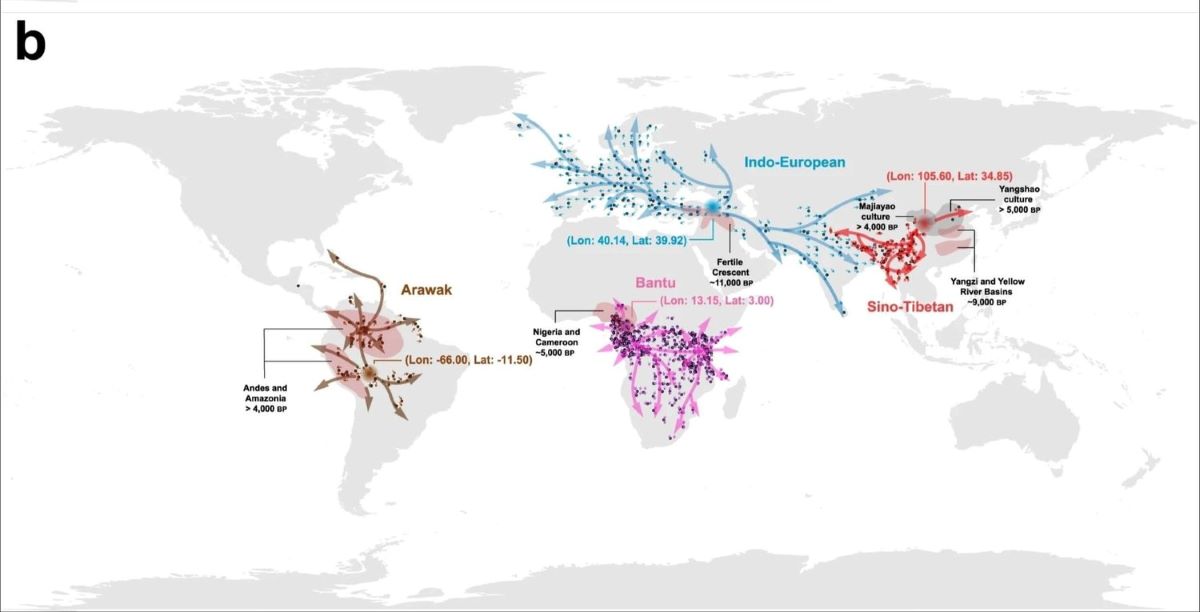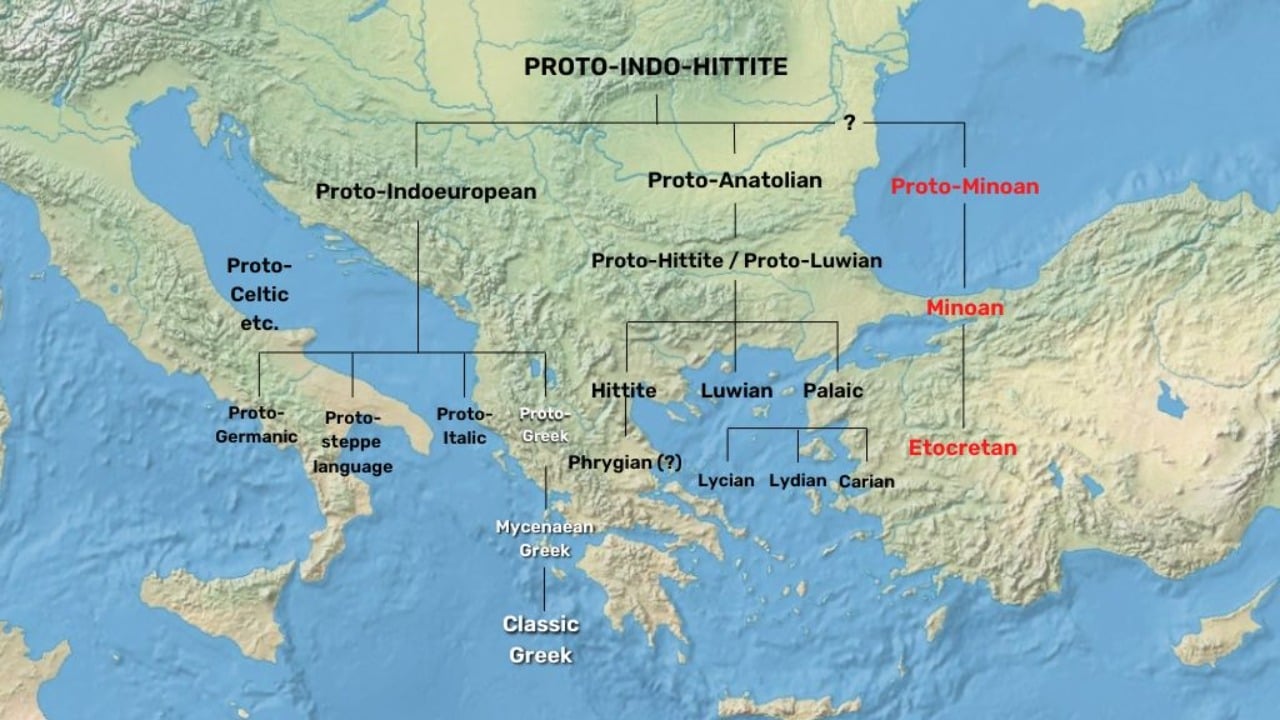
The new groundbreaking Language Velocity Field (LVF) method is helping researchers trace dispersion patterns of languages, including Greek, across the world.
The spatial evolution of languages can help deepen our understanding of people diffusion and cultural spread. The language velocity field estimation is different from the frequently used phylogeographic approach which cannot fully explain the language evolution induced by the horizontal contact among languages, such as borrowing and areal diffusion.
The study of language evolution, particularly its spatial dispersion, offers valuable insights into our collective past. Traditional approaches, such as the phylogeographic approach, often miss the complexity of language evolution.
The LVF estimation is the product of a new study, published by the Nature Communications journal. It is a computational approach that steps beyond the limitations of previous methods, providing a more comprehensive understanding of language dispersal.
LVF incorporates both vertical and horizontal dimensions of language change. This distinction is crucial in multilingual regions, where languages often borrow from and influence each other, leading to a more complex evolutionary pattern.
How LVF Works
The Language Velocity Field method first creates a velocity field that shows how linguistic traits change over time, accurately capturing the essence of both horizontal contact and vertical divergence. This field is similar to the phylogenetic tree but with an expanded scope.
Then LVF projects this field into geographic space, thereby outlining language dispersal trajectories based on linguistic relatedness and geography. This new method has been tested by simulating one thousand datasets and then being used to figure out how major agricultural language families, such as the Indo-European to which the Greek language belongs, Sino-Tibetan, Bantu, and Arawak spread.

The empirical application of LVF to these language families showed dispersal trajectories aligning with population movements inferred from ancient DNA and archaeological data. Moreover, the identified dispersal centers were geographically close to the ancient homelands of agricultural or Neolithic cultures.
The findings underscore the important role of agricultural languages in mirroring demographic and cultural spreads over the past ten thousand years.
Close to the Anatolian Hypothesis
The new study appears to align more closely with Colin Renfrew’s Anatolian hypothesis, proposed in the 1980s, for the distribution of Indo-European languages. It posits that the spread of Indo-European languages was closely tied to the diffusion of agriculture from Anatolia (modern-day Turkey) around 8,000 to 9,500 years ago.

The LVF study’s results, which show that the paths of language families used in farming are similar to population movements inferred from ancient DNA and archaeological data, support the theory that language spread and agricultural growth are linked. Specifically, the LVF approach identified the dispersal center of Indo-European languages in the Fertile Crescent. It is an area closely associated with the earliest known agricultural developments and within proximity to Anatolia.
These results suggest a stronger link between the spread of Greek and other Indo-European languages and the spread of agriculture in Anatolia.

A Valuable Tool for Language Evolution Studies
The introduction of the Language Velocity Field provides a valuable tool for language evolution studies. Its ability to account for both vertical and horizontal language dynamics opens new avenues for understanding the intricate relationships between language, culture, and human migration patterns.
This approach not only enriches our comprehension of linguistic development but also offers insights into broader historical narratives. It provides a more holistic view of human history. The LVF method helps unravel the complex story of human languages and their journey across time and space.
See all the latest news from Greece and the world at Greekreporter.com. Contact our newsroom to report an update or send your story, photos and videos. Follow GR on Google News and subscribe here to our daily email!



